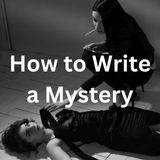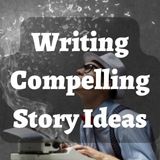Plan the whole plot when I'm a pantser
I would like to know how do I plan the whole plot when I'm a pantser and I don't know what is going to happen.
I know the theme, I know what is happening now, but I don't know what would happen next. sometimes I get several options in my head that I don't know which one to take, but many writers that I love plot the whole book before hand.
It is driving me crazy. Help please!
Answer: Story arcs tend to unfold in similar ways. Some writers like to say that the end is in the beginning, because a well plotted arc will have a certain shape, so if you know the beginning you can to some extent predict what comes next (at least in very general terms). Of course, to readers this structure should be largely invisible.
For instance, you know that in act one you are going to introduce at least on interesting character who finds himself in an interesting predicament or faced with an interesting problem. You may also begin exploring an interesting story world or a web of dysfunctional relationships. These are some of the things that encourage the reader to keep reading.
You also know that act two will be the complication phase. Things will happen that make the problem seem harder to solve. New obstacles and dilemmas may arise. New discoveries will be made that complicate things.
In act three, there will be a push toward a crisis -- a turning point. And the fourth act will resolve everything.
You should also know that each act begins and ends with a major turning point or "driver."
Act one begins with an initial driver that disrupts the status quo and causes the rest of the story to happen.
Act one ends with the second driver that generally reveals the problem is worse than imagined. Act two is a response to the second driver.
Act two ends with a third driver that is often like a "point of no return." From here on, the third act proceeds with a build in tension to the crisis (the fourth driver).
The fourth act follows the crisis driver and leads to the fifth driver, which determines decisively what the outcome will be.
So, when you know all this, you can write as a pantser, keeping in your mind which turning point your characters are reacting to and what the current act is building toward. That will help you know what direction to take in the story.
Another approach (admittedly more of a plotter approach)...
Sometimes it helps to think backwards. For
On the other hand, if victory seems inevitable at the crisis, then you know everything will go wrong leading to a catastrophe and tragic ending.
Taking that back a step...
If you know the crisis will be a black moment, then act two will build up to that crisis through a series of complications, problems arising, obstacles, etc.
If you know the crisis will look bright, then act two will show the heroes making progress, building to that bright moment.
You also know that the first act will introduce the story problem. Some new opportunity or threat will arise that will set the hero on the path they will follow.
Similar guidelines apply to the main character's inner journey. The main character's personal crisis in act 3 is the moment they choose whether to change or stay steadfast, and that choice will usually determine the outcome of the story.
For instance, if you are going for a happy ending, the main character will make the right choice at their personal crisis, which means they will end the story happier or better off. If you are going for a personal tragedy, then the main character will make the wrong choice at their personal crisis.
Act two will show how the main character is pressured to change, is made to doubt their usual way of doing things.
Act one will show who the main character is, what their usual approach is, before the pressure to change ramps up.
So you can consider who your main character is in act one. How can you pressure them to change? What might they need to learn as the next stage in their growth? (Or, do they need to resist the temptation to change?)
Show the pressure to change in act 2. Show what choice they make in act 3.
In act 4, show whether that choice led to success or failure, and whether the main character ends up better or worse off.
I realize that's all very general. Every good story feels different because there are an infinite number of plots that still follow that pattern. But I hope that gives you something to think about.
BTW, if you are a pantser, you may want to get part-way through a draft and then sit down and consider where the story is going before you continue.
Best of luck.
- Home
- Plot Questions
- Plan the whole plot when I'm a pantser














